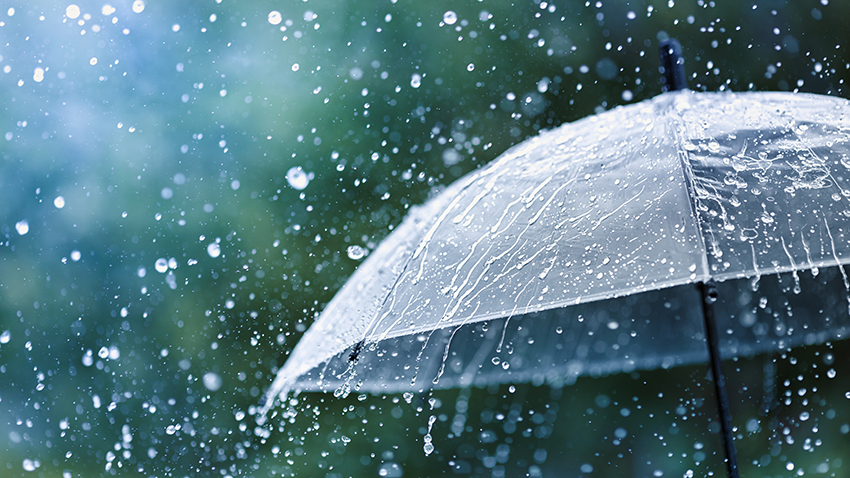I’ve seen it all when it comes to spraying polyurea. The jobs that go smoothly and the ones where you swear the universe was conspiring against you. There’s nothing worse than starting a job, ready to spray, only to have Mother Nature turn up like an uninvited guest. It’s tempting to push through and spray anyway, but I’m here to tell you: the weather matters. And it’s not just about whether it’s raining or sunny. The trickier part comes from humidity, dew point, and temperatures. Let me walk you through some of the real-life lessons I’ve learned regarding getting the weather just right for polyurea spraying.

Why Humidity and Dew Point Matter (More Than You Think)
Here’s the thing about polyurea: it’s a bit like that houseguest who just won’t stay if the conditions aren’t exactly to their liking. And when I say “conditions,” I mean humidity and temperature, mostly. Let’s talk about humidity first. We all know what high humidity feels like—it’s sticky, uncomfortable, and makes you sweat just standing there. But for polyurea, it’s more than uncomfortable; it’s downright dangerous.
If you’ve ever tried spraying polyurea when the humidity is too high, you’ll know what I’m talking about. The coating won’t cure properly. It can bubble, peel, and in worst cases, just fall apart. I’m not being dramatic when I say that spraying polyurea when humidity levels are above 80% is a terrible idea. You might as well throw your material in the trash because that’s where it’s going to end up.
But it gets tricky here: just looking at the air humidity isn’t enough. You can check the air humidity all day long, and it might look fine, but you could still be heading for trouble. The real player you need to watch out for is the dew point. When the temperature of your substrate (the surface you’re spraying) is close to or below the dew point temperature, you’re basically asking for moisture to sneak onto that surface. When that happens, polyurea can’t bond correctly. It’s like trying to tape something to a wet surface—good luck with that.
So, if you take nothing else from this, remember: your substrate needs to be at least 5 degrees above the dew point temperature. Anything less than that, and you’re going to see condensation forming, which will ruin the adhesion.
The Trap of Trusting Only Air Temperature
I’ll admit, early in my career, I made the rookie mistake of thinking, “Well, it’s not raining, and the air temperature looks fine. Let’s spray!” I learned the hard way that air temperature isn’t everything. You’ve got to check the substrate temperature. Let me paint you a picture: one hot summer day, I’m out on a job, and the air temp is hovering around a toasty 85°F. Seems perfect, right? But what I didn’t check was the substrate temp. Turns out, the surface had been baking in the sun and was well over 110°F. You know what happened? The polyurea didn’t cure properly and ended up looking like something out of a horror movie.
If your substrate is too hot, the polyurea can cure too quickly, leaving you with a less-than-smooth finish. On the flip side, if the substrate is too cold, the material might not cure at all. And trust me, you do not want to deal with a coating that never hardens. It’s a nightmare.
When Your Readings Are Off: What Now?
Let’s say you’re out there with your fancy digital hygrometer and temp gun (if you don’t have these, get them—they’ll save you), and the readings aren’t quite where they should be. Maybe the humidity is a little too high, or the substrate temp is flirting dangerously close to the dew point. What do you do? Call it a day and head to the nearest coffee shop? Well, sometimes. But not always.
In some cases, you can tweak your environment a little. If humidity is the issue, try to wait it out, if you can. Sometimes, as the day progresses, the humidity can drop, especially in the late morning to early afternoon. I’ve also seen jobs where we used dehumidifiers or even fans to get a better result. It takes some extra time and planning, but it’s worth it.
If the substrate temp is too high, and you’re seeing scorching conditions, spraying early in the day might be the key. Surfaces are usually cooler in the morning before the sun has had time to bake them. Or, you can try covering surfaces to protect them from direct sunlight. On the other hand, if the substrate is too cold, heating the surface is a viable option. I’ve been known to break out some heaters or heat guns on more than one occasion to bring a surface up to temp.

The Consequences of Ignoring the Weather
You might be thinking, “What’s the worst that could happen?” Well, let me tell you. The worst-case scenario is a complete redo of the job, which is both time-consuming and costly. If you spray in bad conditions, you could end up with blistering, pinholes, or even total adhesion failure. And once that polyurea has cured improperly, there’s no quick fix. You’ll be back on site with grinders and scrapers, removing your failed coating and starting from scratch.
I’ve had a client once try to rush a job by spraying in sub-optimal conditions. I warned them, but they were insistent. Long story short, we had to return a few weeks later to remove the entire coating and reapply it. Not only did this hurt the client’s wallet, but it also damaged their trust. Had we just waited for the weather to cooperate, we could’ve avoided the whole mess.
Real-World Example: When Waiting Paid Off
Now, not to sound like I’m always following my own advice (nobody’s perfect), but I had one job where waiting really did pay off. It was for a big industrial project, and the conditions were borderline. I could have sprayed, but I didn’t feel great about it. Humidity was just a tad too high, and the dew point was dangerously close to the surface temp. The client was anxious to get the job done, but I convinced them to wait a day.
The next day, the weather cleared up. Humidity dropped to a manageable level, and the surface temp was perfect. We sprayed, the coating cured beautifully, and the client was thrilled with the end result. The moral of the story? Waiting for the right conditions can be frustrating, but it’s always better than rushing and dealing with a failed coating.
Final Thoughts
If you spray polyurea, the weather isn’t just a background factor—it’s a main character in your job’s success or failure. You’ve got to check humidity, dew point, and substrate temperature every time. Don’t assume that it’s a good day to spray just because it feels nice outside. Your readings are the only thing you can trust. And if those readings aren’t where they need to be, don’t be afraid to delay or adjust your approach. You’ll thank yourself later when the job turns out exactly as it should.
So, next time you’re out there with your sprayer, remember: Mother Nature always has the last say. And if you’re smart, you’ll listen to her.






